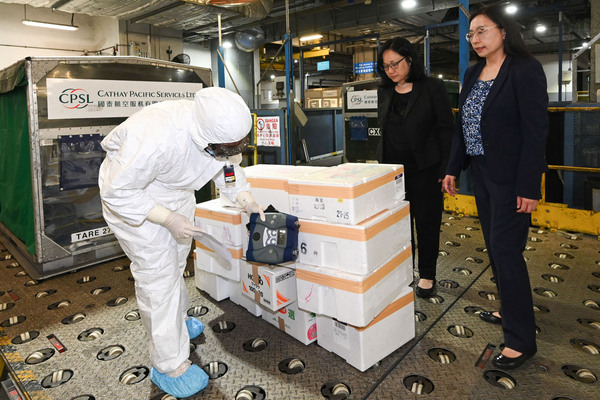Japanese food inspection smooth

Director of Food & Environmental Hygiene Irene Young (first right) observes the consignment clearance and inspection procedures for aquatic products imported from Japan at the Hong Kong International Airport.
Director of Food & Environmental Hygiene Irene Young today observed the consignment clearance and inspection procedures for food products imported from Japan at the Hong Kong International Airport, the operation of which was generally smooth.
All aquatic products originating from 10 metropolis or prefectures are prohibited from being imported into and supplied in Hong Kong if they are harvested, manufactured, processed or packed on or after August 24.
For other aquatic products, sea salt, and unprocessed or processed seaweed from Japan that are not prohibited from being imported into Hong Kong, the Centre for Food Safety will conduct comprehensive radiological tests to verify that the radiation levels of such products do not exceed the guideline levels before they are allowed to be supplied in the market.
.
Ms Young visited the airport’s cargo terminals and the centre’s Airport Food Inspection Office to observe the consignment clearance and inspection procedures for aquatic products imported from Japan.
The centre’s staff demonstrated how the relevant documents and the label of goods as well as the radiation certificate and exporter certificate of the food products under regulation are reviewed when they are imported from Japan.
According to current observations, the inspection time for most imported Japanese aquatic products is essentially the same as it has been in the past. The majority of the inspections may be completed in about an hour, and the whole consignment clearance procedures including inspection can usually be completed within three to four hours.
The centre will hold the third session of an online briefing tomorrow for relevant sectors to explain the details of the new measures. Participation by the logistics sector is invited to better complement the logistical arrangements for the imported goods.